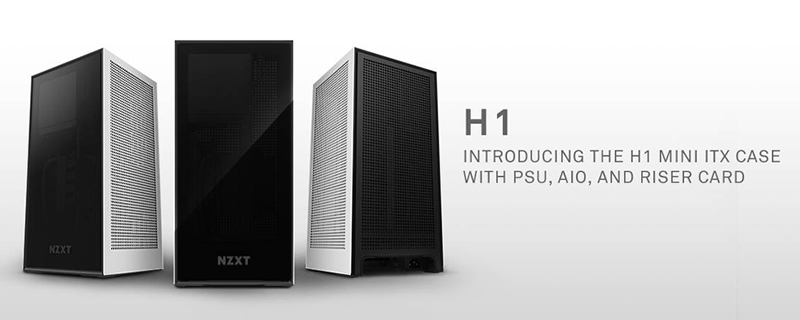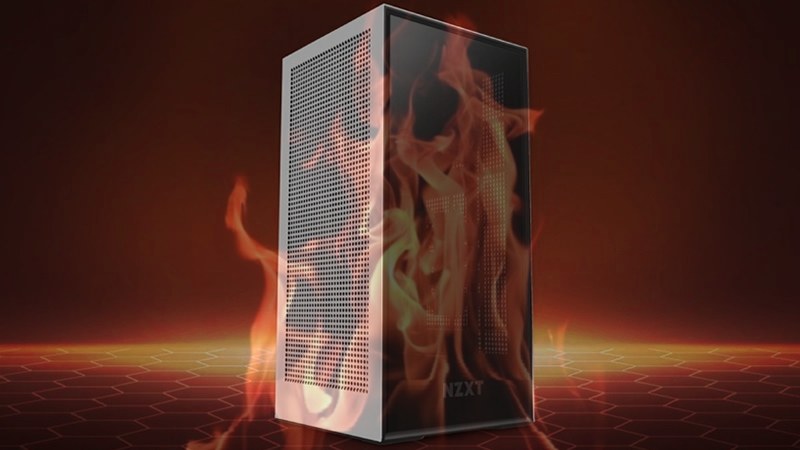NZXT Recalls their H1 PC Chassis in the US and Canada
NZXT Recalls their H1 PC Chassis in the US and Canada
With this recall, NZXT plans to send all H1 owners a repair kit which will include a redesigned PCIe riser card, which all owners of the enclosure can install to replace their potentially faulty riser cards. This recall was issued on February 12th, 2021, two and a half months after we first reported the product’s safety concerns.Â
Below is a message from NZXT, following their official recall announcement. Â
Â
  Upon further examination of the safety issue, we will be removing the H1 from NZXT.com and NZXT BLD. We’re going to send out redesigned PCIe Gen3 Riser Assemblies for current H1s and we’re going to help with installation for those who need it.
Â
H1 owners should head over to NZXT’s website to request a repair kit, which will be sent out to H1 users over the coming weeks. By following NZXT’s repair guide, users will be able to replace their cases’ original PCIe riser card with a safe replacement, mitigating the enclosure’s safety issues in their entirety.Â
Below is NZXT’s official description of the H1’s safety issue;Â Â
  H1 Safety Issue
We’ve identified a potential safety issue with H1 cases and have temporarily paused new sales. The two screws that attach the PCIe Riser assembly to the chassis may cause an electrical short circuit in the printed circuit board that may overheat and create the possibility of a fire hazard. While this issue impacts a small percentage of cases, we are playing it safe and are developing a simple-to-use repair kit that you can install without having to ship your case anywhere.
Which H1 cases are affected?
All H1 cases (models CA-H16WR-W1 and CA-H16WR-B1) may be affected. This includes purchases made through BLD. While we have identified this issue as a low probability occurrence, the absolute safest approach is to power down your H1 until a kit is sent out and the repair is made.
What happened?
NZXT’s H1 contains a PCIe riser card that features a design flaw that places its 12V too close to the screw mounts, allowing the PCIe riser card to short out in rare instances and create a fire hazard. NZXT tried to address this issue by replacing their metal screws with nylon screws, which has proven to be an inadequate fix.Â
NZXT’s nylon screw fix fails to pass the “foolproof test” of safe product design, as users of NZXT’s H1 could easily replace NZXT’s nylon screws with metal ones. Why would someone do this? The simple answer is that PC builders love to mod, and a lot of system modders love to finish their systems off with custom screws. Those who are unaware of the flaw in NZXT’s riser card could easily create a fire hazard. NZXT’s nylon screw plan may look good on paper, but it doesn’t stand up to deeper scrutiny.Â
Why wasn’t the Nylon Screw fix good enough?Â
While NZXT’s Nylon screw plan could prevent H1 systems from shorting, the plan left the core of the problem unaddressed. While replacing NZXT’s nylon screws with metal screws may seem like a crazy move for anyone who knows about this design flaw, it must be remembered that most PC builders are not fully up to date on hardware news.Â
As a writer with a background in mechanical engineering, the flaw of NZXT’s plan is that it does not stand up to defensive design principles. In common terms, defensive design can sometimes be referred to as “foolproof” or “idiot-proof” design. Defensive Design required designers to plan for contingencies that anticipate what end-users could do to misuse their devices. An example of this is how many industrial machines require users to push two buttons simultaneously to operate them, thereby preventing an operators hand from getting caught in the machine while it is moving.Â
In NZXT’s case, they didn’t anticipate H1 users replacing their nylon screws, and there are many reasons for users to do this. For starters, users could disassemble and reassemble their PCs while cleaning and re-attach the H1’s riser card using the wrong screw, thereby creating a fire hazard. Users who are unaware of this issue could opt to replace their H1 screws with custom, matching screws for aesthetic reasons, creating a fire hazard. So long as NZXT doesn’t address the underlying issues with their PCIe riser card, this risk will always exist.Â
While some will say that NZXT’s nylon screw fix is “good enough”, it doesn’t eliminate the H1’s fire hazard risk. That can only be done with a redesigned PCIe riser card, and NZXT now knows that.Â
(A video of NZXT’s H1 shorting – Video provided by OC3D reader Tim house)
You can join the discussion on NZXT’s H1 Recall on the OC3D Forums.Â
NZXT H1 users can request a repair kit here. You can also read the case’s official H1 recall notice here.Â




